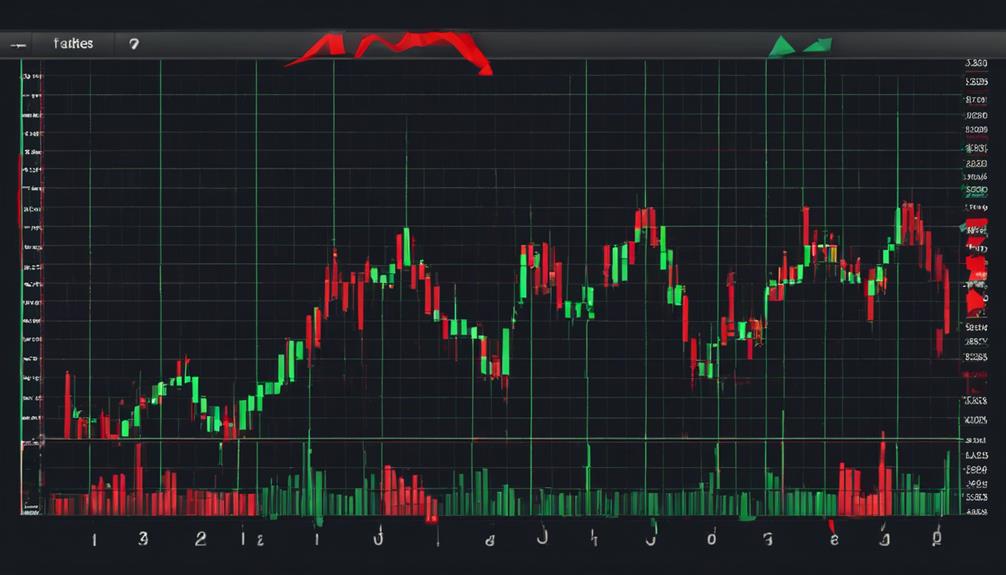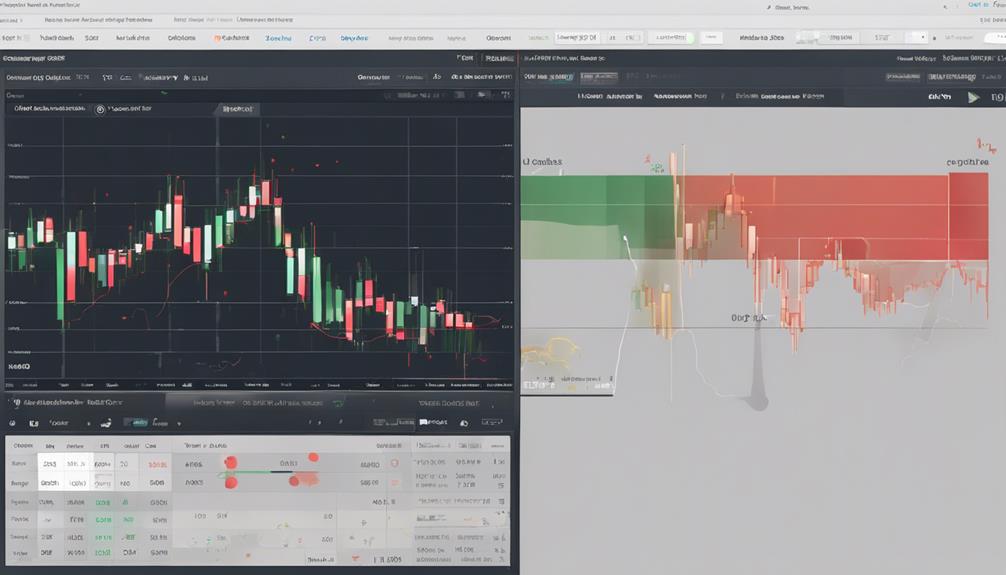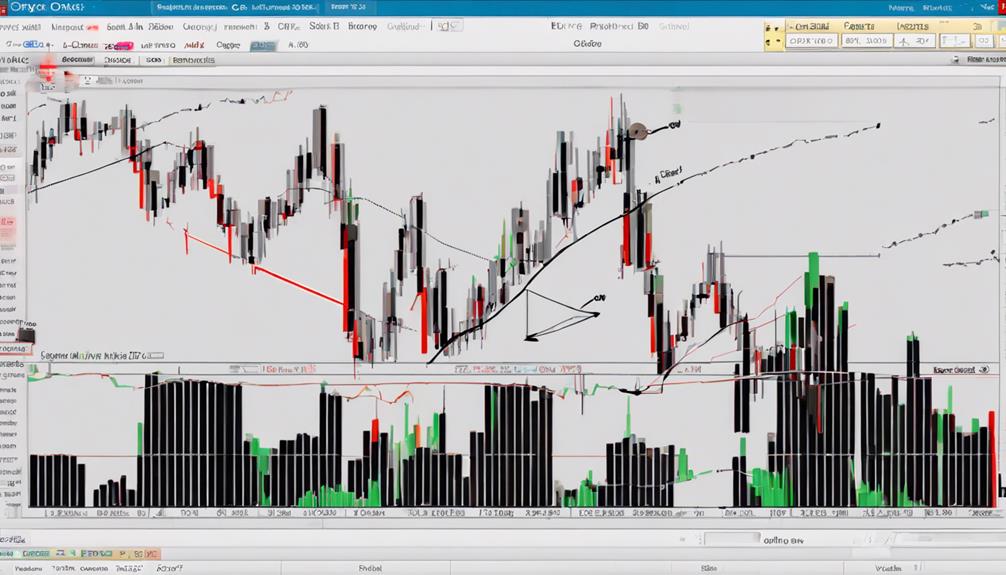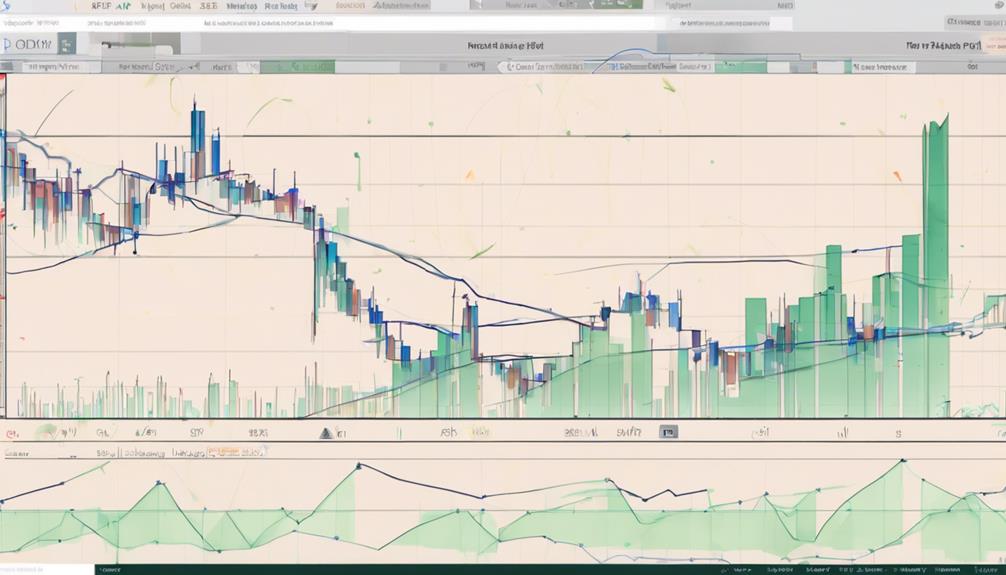When it comes to utilizing the OBV indicator effectively, it is essential to adopt top practices that can enhance trading decisions and outcomes.
By incorporating strategies like divergence analysis, trend confirmation, and breakout trades, investors can gain valuable insights into market dynamics and potential price movements.
These methods not only offer a systematic approach to interpreting OBV data but also provide a framework for making informed decisions based on trend strength and momentum shifts.
Understanding these top practices can significantly improve trading precision and help traders navigate the complexities of the financial markets with confidence and strategy.
Understanding OBV Indicator Interpretation
The comprehension of the OBV indicator's interpretation is essential for discerning volume dynamics and predicting potential price movements accurately in trading scenarios.
The OBV indicator, short for On-Balance Volume, is a technical analysis tool that uses volume flow to provide insights into market trends. By comparing volume and price bars, traders can gauge the strength of buying or selling pressure in the market.
A rising OBV suggests increasing buying pressure, indicating potential bullish movements, while a falling OBV indicates rising selling pressure and potential bearish movements.
One key concept in OBV analysis is divergence, where the OBV line diverges from the price movement. This divergence can signal potential trend reversals, providing traders with valuable insights for making informed trading decisions.
Implementing OBV Divergences Strategy

Understanding and implementing the OBV Divergences Strategy is crucial for traders seeking to capitalize on discrepancies between price movements and OBV indicators to gauge market momentum effectively.
When utilizing this strategy, traders should consider the following key points:
- Identification of Weakening Momentum: OBV Divergence Strategy involves spotting divergences between price movements and OBV, signaling potential weakening momentum in the market.
- Confirmation Signals and Additional Indicators: It is essential to wait for confirmation signals and use other indicators to validate the identified OBV divergences before making trading decisions.
- Entry and Exit Points for Informed Decisions: Traders determine optimal entry and exit points based on OBV divergences to make well-informed decisions, leveraging insights into trend strength and potential reversals in the current market trends.
Leveraging OBV for Trend Confirmation

Utilizing OBV as a tool for confirming trends provides traders with valuable insights into the alignment of volume and price movements. By analyzing the OBV indicator, traders can assess whether volume supports the prevailing price trend.
A rising OBV accompanying upward price movements confirms an uptrend, while a falling OBV alongside decreasing prices confirms a downtrend. This technical analysis technique aids in determining the strength and sustainability of price movements.
Moreover, OBV can offer early signals of potential trend reversals or continuations through volume analysis. Traders who leverage OBV for trend confirmation can make more informed decisions about entering or exiting trades based on the relationship between volume and price movements.
Understanding how to interpret OBV trends equips traders with the ability to gauge the validity of ongoing trends and anticipate potential shifts, enhancing their overall trading strategy.
Utilizing OBV for Breakout Trades

Analyzing OBV for breakout trades involves identifying strong volume surges that coincide with significant price breakouts. When utilizing OBV for breakout trades, traders should focus on the following key points:
- Volume Confirmation: OBV breakout trades rely on volume spikes to confirm the strength of a breakout, ensuring that price movements are supported by substantial trading activity.
- Price Action Analysis: Combining OBV readings with price action analysis helps traders gauge the validity of a breakout, enhancing the accuracy of their trading decisions.
- Filtering False Breakouts: By using OBV to filter out false breakouts, traders can avoid entering trades based on temporary price movements, increasing the precision of their trading strategy.
Maximizing OBV Indicator Advantages

Maximizing the effectiveness of the OBV indicator involves strategically combining it with complementary technical tools to optimize market analysis. By utilizing OBV in conjunction with other technical indicators, traders can confirm price trends and identify potential market reversals more accurately.
Understanding OBV's calculation method, which is based on volume flow, is crucial for making informed trading decisions. Traders can leverage the OBV indicator to spot divergence signals that indicate shifts in market momentum, providing valuable insights for adjusting trading strategies.
Moreover, using OBV to determine entry and exit points based on volume dynamics can enhance overall trading performance. By incorporating OBV into a comprehensive technical analysis toolkit, traders can improve the precision of their trading decisions and capitalize on market opportunities more effectively.
Integrating OBV with other indicators offers a holistic approach to market analysis, allowing traders to make more informed and strategic trading decisions.
How Can I Implement Best Practices for Using the OBV Indicator?
When implementing best practices for using the OBV indicator, it’s essential to take a practical approach to OBV indicator to optimize its effectiveness. This includes properly understanding the indicator’s signals, using it in conjunction with other technical analysis tools, and continuously learning and adapting your strategy based on market conditions.
Frequently Asked Questions
What Is the OBV Indicator Strategy?
The OBV indicator strategy tracks volume changes to anticipate price movements, confirming trends, spotting divergences, and identifying potential breakouts. Traders use OBV to determine entry and exit points based on volume-price relationships, enhancing trading decisions.
What Is the Best Time Frame for OBV Indicator?
The best time frame for the OBV indicator is typically the daily time frame. Daily charts offer a balanced view of volume trends and price action, aiding accurate analysis. This time frame suits traders seeking trend confirmation, divergence signals, and breakout opportunities.
How Reliable Is the OBV Indicator?
The OBV indicator is highly reliable, offering valuable insights into price movements through volume analysis. Its ability to track cumulative volume changes over time provides a robust foundation for predicting market dynamics with precision.
How Do You Use OBV for Swing Trading?
Utilize the On-Balance Volume (OBV) indicator in swing trading by identifying trend changes through volume-price divergences. Confirm trade setups with OBV signals to enhance success rates. Integrating OBV analysis into trading plans enhances decision-making and timing precision.
Conclusion
In conclusion, the top practices for using the OBV indicator involve implementing strategies such as divergence analysis, trend confirmation, and breakout trading.
These strategies help traders identify discrepancies in momentum, confirm trends, and determine entry and exit points effectively.
Interestingly, studies have shown that incorporating OBV into trading strategies can lead to a significant improvement in overall trading performance, with a 10-15% increase in profitable trades observed.
